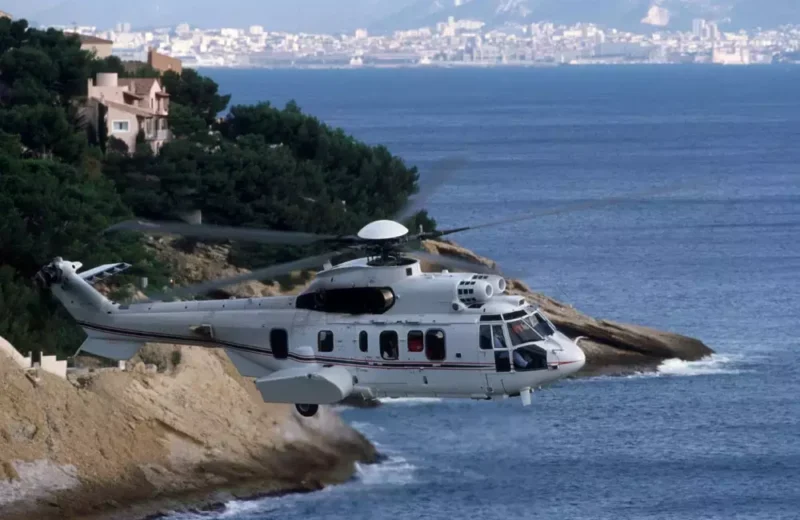Sanctions create ‘opportunity for Western heavy helicopters’

Sanctions against Russian helicopter manufacturers are blocking the availability of new aircraft and parts, creating short- to medium-term opportunities for western suppliers, according to IBA’s latest webinar on helicopter values and availability. Also, super-medium helicopters are becoming increasingly popular at the expense of heavy helicopters.
Rami Abdel Aziz, aviation analyst, Helicopters, IBA told Helicopter Investor: “Russian helicopters have a key claim to a sizeable footprint not just in Russia but also in the Middle East, Asia Pacific region, Africa – and more specifically in India and China, Pakistan and Iran.” Aging fleets will soon require replacement.
“In the mid term, we expect that the maturity of many Russian-built fleet renewals will likely be converted to western built [models] – especially for helicopters that are under 10-11t. Export sanctions and the supply of parts are proving difficult to source through the usual channels,” said Aziz.
But there has been little movement to replace the Russian Mil Mi-171. “As for the over-10t helicopters, the Mi-171, we have not seen any movement in replacing this type yet,” said Aziz.
The closest replacement for a Kamov K32 would be a Sikorski Heliservices S-92 or an Airbus 225 (pictured), he added. “But there’s still a big gap in the MTO [make to order] for these helicopters. Over the long term, without doubt, Russian helicopters will recover – although this will be rather slowly.”
In the European market, there are about 25 to 30 Kamov helicopters, mainly used for fire-fighting, with almost all in long-term storage.
The global fleet of western-built turbine helicopters totals more than 22,000 aircraft, with a combined value of $50bn, according to IBA. The medium size helicopter fleet accounts for the largest combined value. Helicopter financing and leasing is a relatively young market and is generally less mature than its fixed-wing counterpart, said Aziz. About 10% of the global helicopter fleet is leased compared with about 50% of the fixed wing fleet. A larger proportion of super-medium and heavy helicopters are leased compared with other types. Lessors supply heavy helicopters accounted for 30% to 35% of the market segment.
Europe is the largest geographical leasing market, where 12% of all helicopters are leased, followed by North America with 8%. Between 500 and 550 helicopters are expected to be delivered this year.
Demand for heavy helicopters – defined as weighing above 9t and with list prices ranging from $15m-$35m – is benefiting from high oil prices above $70 a barrel. IBA sees global growth opportunities in offshore oil and gas production and exploration – particularly in the North Sea, Gulf of Mexico and other areas. Demand for helicopters to serve the offshore wind generation market and emergency medical services (EMS) are showing growth.
“The first half of 2022 saw a considerable reduction in the number of helicopters offered for sale and an increase in their prices,” said Aziz. The trade in heavy helicopters is mainly confined to Airbus 225s and Sikorsky Heliservices S-92s, with many S-92s being recommissioned after lengthy periods in storage due to the downturn in the oil and gas market. (The Airbus 225 has recovered from the technical problems linked to gear boxes that led to the aircraft being banned from offshore operations in 2017, said Aziz). Also new build helicopters are not expected to enter production until 2025 – although the Bell 525 Relentless super-medium twin is due to enter service soon.
“The pre-owned market is growing and seeing a large number of transactions for operators who are in need of helicopters as soon as possible and cannot wait for new helicopters,” said Aziz. “There are very few S-92s available in the market for the next two to three years as long as oil prices remain above $70 a barrel.”
An example of hardening demand and prices for S-92s was delivered by Phil Seymour, president IBA. “The prices of 10-year old S-92s, that earlier this year would have sold for about $8.5m, are now touching $10m,” he said. Bristow Group operates about 80 heavy helicopters and CHC about 61. “Production rates [of heavy helicopters] have really dropped off. It is the super-mediums filling the gap. The market has downsized a little to a more economical option.”
Aziz confirmed super-medium helicopters, and to a certain extent medium helicopters, were claiming some of the missions traditionally operated by heavy helicopters. For example, Leonardo’s medium AW139 helicopter can support near offshore oil production. Dominant models in the super-medium market are the Airbus 175 and Leonardo AW189.
“Larger super-medium helicopters can replace the older heavier helicopters,” said Aziz. “That’s because they have similar range, lower costs and more relevant passenger seat numbers.”
The IBA webinar – An Update on Helicopter Values – took place on Tuesday December 8th.
Meanwhile, if you enjoyed this content, please register for our free weekly Uplift newsletter.
Helicopter categories – at a glance
Light helicopters
- $3m-$5m approximate list price, depending on size and configuration
- Weight: 2.5-4t.
Medium helicopters
- $10m-18m list price
- Weight: 4-7t.
Super-medium helicopters
- $15m-22m list price
- Weight: 7-9t.
Heavy helicopters
- $15m-35m
- Weight: +9t.
- price
- Weight: 7-9t.
Heavy helicopters
- $15m-35m
- Weight: +9t.






